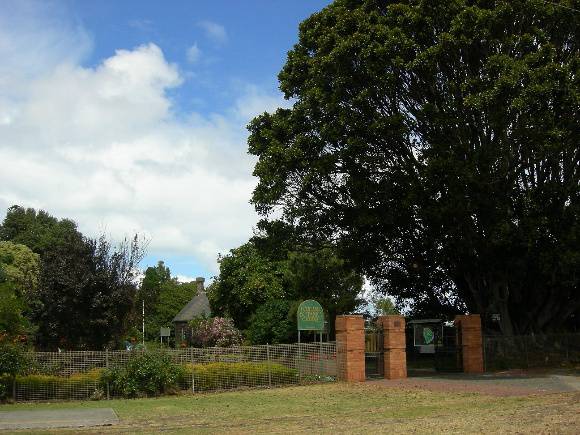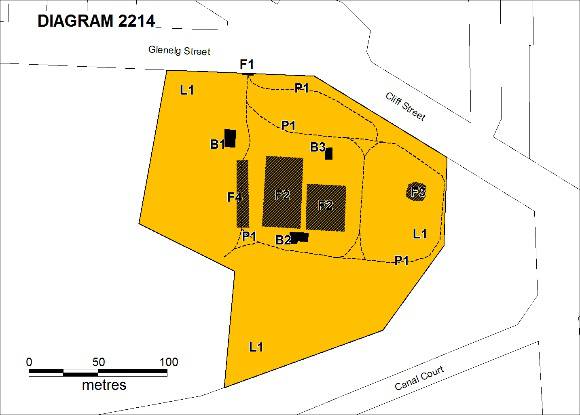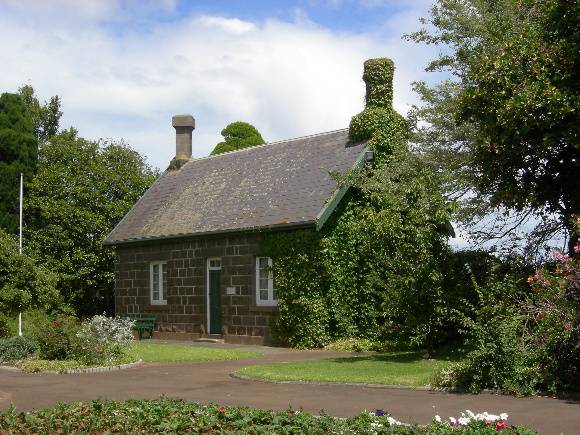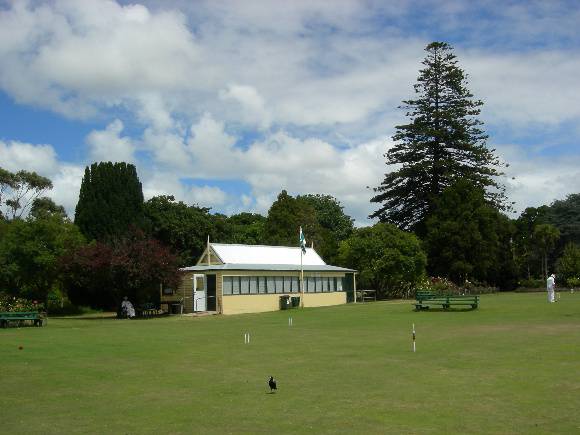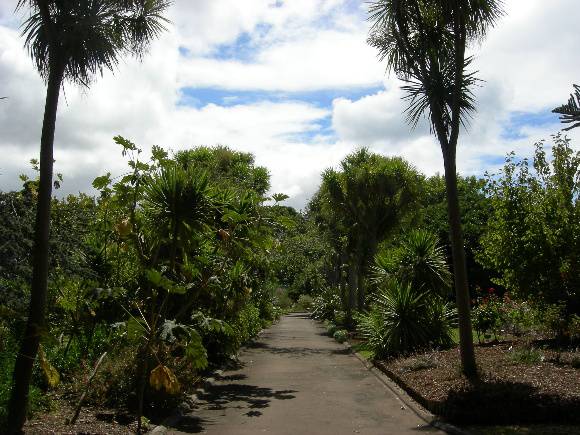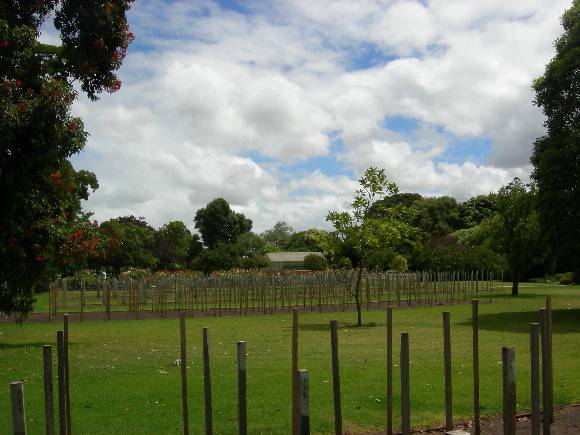| Back to search results » | Back to search page » |
|
PORTLAND BOTANICAL GARDENS
Other NamesPORTLAND BOTANIC GARDENS , HENTY PARK (PART) Location1 GLENELG STREET PORTLAND, GLENELG SHIRE
File Number601001LevelRegistered |
|
Statement of Significance
What is significant? Portland Botanic Gardens are one of the earliest regional botanic gardens in Victoria. The original 13 hectare site (32 acres) was reserved in 1851 but not developed until 1858 when William Allitt began implementing a plan designed by Alexander Elliott. The Portland Botanic Gardens occupy the eastern section of Henty Park which was named in the 1965 re-reservation following canal works to the south. Henty Park comprises three principal areas: the Botanic Gardens (3.25 hectares), the swimming pool complex (1.4 hectares) and the balance of the park (8.2 hectares) which includes recreation areas such as the oval, tennis complex, swimming centre, former show and camping grounds and the cable tram depot. The Botanic Gardens are bounded by Glenelg Street and Cliff Street to the north, the canal to the east and south and by the oval and tennis courts in Henty Park to the west. The design and layout is unusual for a botanic garden as it is based on the traditional squared formal layout of experimental and systematic gardens, and the central path and curving perimeter walks have largely remained unchanged since the 1860s. The main entrance gates to the Gardens are in Glenelg Street past the former picturesque curator's basalt cottage constructed in 1859 which faces the main north-south path lined with Cordylines. To the west is the Cedar lawn. The path continues to loop to the east and north enclosing the croquet lawns first established in 1868, the clubhouse built in 1912 and a glasshouse c1980, with extensive beds of roses in the western half and dahlias in the eastern half. This area forms the nucleus of the earliest section of the Gardens. To the south is the large triangular native garden lawn, which was originally part of the swampy land on the banks of Salt Creek. A path constructed in the 1960s follows the canal along the southern boundary linking into the path which curves back to the main entrance. The Portland Botanic Gardens contain a number of rare plants including Wigandia caracasana, Rhus viminalis (African Sumac), Buddleya lindleyana (Butterfly Bush), Azara integrifolia, Erythrina caffra (South African Coral Tree), Crataegus 'Smithiana' ,Ceanothus pinetorum, and the largest known example of Cordyline australis (New Zealand Cabbage Tree) in Victoria. The garden has a collection of 300 different varieties of roses and 170 varieties of dahlias of which 1,300 are bedded annually. The Council nursery is located adjacent to the gardens and contains glass and shade houses in which plants are cultivated for use in the Botanic Gardens and other Council gardens. How is it significant? Portland Botanic Gardens are of historical, scientific (botanical), and aesthetic significance to the State of Victoria. Why is it significant? The Portland Botanic Gardens, established in 1851, are historically significant as one of the earliest regional botanic gardens, being the third oldest in Victoria. Botanic Gardens were established in Melbourne in 1846 and Geelong in 1851. The former curator's cottage constructed of basalt in 1859 is historically significant as one of the oldest garden buildings in Victoria only predated by the Gardener's Cottage (1850) and the Director's Residence (1854) in the Melbourne Botanic Gardens, and is a rare, intact example of the simple picturesque building type. Of historical significance is the association with Alexander Elliott as designer and William Allitt as inaugural curator. Both were British emigrants with considerable horticultural and landscape design experience with Elliott going on to become long-time head gardener at the University of Melbourne. The involvement of the Henty brothers from their nearby property 'Burswood' (VHR H0240) is of historical significance, particularly Edward Henty, who was a keen plantsman and, early member of the Gardens Committee who propagated and arranged plant exchanges for the Gardens. The Gardens have a strong historical significance with the game of croquet which has been played continuously on the current site since 1868. The Portland Botanic Gardens are of scientific (botanical) significance for the collection of plants characteristic of late nineteenth century Victorian gardens which includes plantings of specimen and some rare and important species such as Wigandia caracasana, Rhus viminalis Cordyline australis Ceanothus pinetorum, Buddleya lindleyana Erythrina caffra Crataegus 'Smithiana' and an Azara integrifolia. The Gardens include a wide range of plants selected for botanical interest, areas of intense horticulture such as floral displays of roses and dahlias dating back to 1857, a range of horticultural environments, including a glasshouse and a documented supply of plants from other botanic gardens and horticulturalists.
The Portland Botanic Gardens are of aesthetic significance for the design and layout which is reflected in the largely extant path system and placement of major features such as the curator's cottage, croquet lawn and club house and the glasshouse. The design is unusual as it is based on the squared layout of traditional experimental/trial grounds and systematic gardens, and is both befitting this type of garden and rare in Victoria, also only occurring at Geelong Botanic Gardens. The contrast between the formal area with the serpentine paths, lawn areas and vistas with prominent trees including Ficus macrocarpa (Moreton Bay Fig), Cedrus atlantica f. glauca (Blue Atlas Cedar), Araucaria heterophylla (Norfolk Island Pine) Fagus sylvatica f. purpurea (Copper Beech) and an avenue of Coryline australis are of aesthetic significance. The location of the Gardens adjacent to the closely settled township of Portland with its many extant colonial government buildings, reserves and close proximity to the sea, is also of aesthetic significance.
Group
Parks, Gardens and Trees
Category
Garden Botanic


